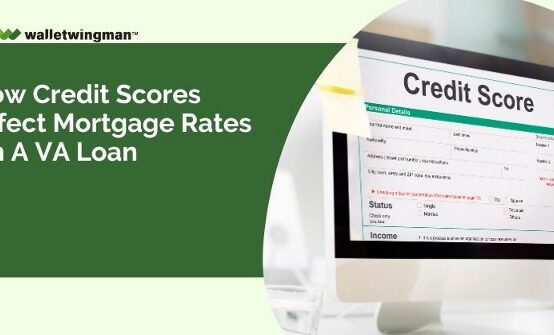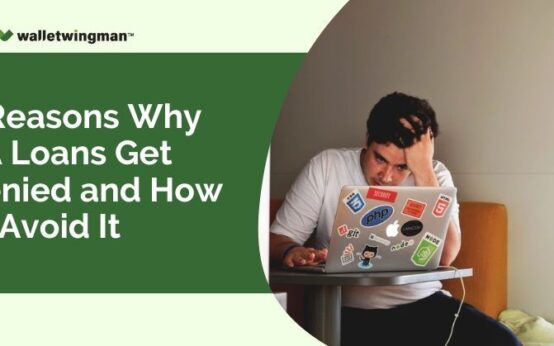How the VA Mortgage Underwriting Process Unfolds
Home buyers planning to use the VA loan program tend to have many questions about the VA mortgage underwriting process, and it’s easy to understand why. Much of it happens without the borrower’s direct involvement, making it a “mystery.”
Even so, home buyers who use VA loans should have a basic understanding of VA underwriting guidelines because there might come a time when they need to take steps to help the underwriter complete the process.
What Is Mortgage Underwriting, Exactly?
The word “underwrite” first appeared in the 17th century, when insurance risk for foreign travel on maritime vessels was underwritten. By writing their name at the bottom of the policy, they confirmed their agreement that the coverage was in effect. The insurance company would “subscribe,” or (literally, to write beneath or “under-write” the policy).
Today, mortgage underwriting represents the final review of a borrower’s loan application and supporting documents.
The review process starts earlier, shortly after the borrower applies for a home loan or gets pre-approved. However, the most intensive review occurs during the mortgage underwriting stage, which takes place before the final closing.
Mortgage lenders who offer VA loans typically use an “Automated Underwriting System,” or AUS. This is a computer software system that evaluates a borrower’s eligibility for a VA loan based on a variety of criteria. Many of these criteria come from the Department of Veterans Affairs.
Automated VA loan underwriting systems used for VA loans offer many advantages compared to the manual process. They can streamline and expedite the VA mortgage process to help the borrower reach the final closing stage on time.
Many borrowers can obtain approval through the automated VA home loan underwriting system. But those who have had credit issues might require a secondary “manual underwrite.” This involves a closer and more stringent review of the loan file.
Events that could require manual VA mortgage underwriting include:
- Late or missed mortgage payments in the past
- Defaults on federal debt, and
- Previous bankruptcies or foreclosures.
What Do VA Loan Underwriters Look for?
VA mortgage underwriters review all aspects of the loan file to ensure the lender is making a good investment. In a typical lending scenario, the mortgage lender puts more money into the deal than the borrower. So, they want to make sure they are making a sound investment. If you’re caught in the VA loan underwriting process, thinking, “But I’m the one who is going to be paying for the home,” and you are correct, but here is why this is true:
- Loan-to-Value Ratio (LTV): Most mortgage loans cover a significant portion of the home’s purchase price, often 80% or more. For example, if a borrower buys a $300,000 home with an 80% LTV mortgage, the lender contributes $240,000, while the borrower only puts down $60,000.
- Principal vs. Interest Payments: While the borrower is responsible for repaying the loan with interest, at the moment of the transaction, the lender provides the bulk of the financing upfront, allowing the borrower to acquire the property with relatively little immediate capital.
- Risk Assumption: The lender carries substantial risk because they provide most of the funds at closing, relying on the borrower’s ability to repay over time. If the borrower defaults, the lender may not recover the full loan amount, even through foreclosure.
- Time-Value of Money: The lender is committing capital that could be used elsewhere, often for decades. The borrower benefits from immediate homeownership while repaying over an extended period.
The lender’s underwriter is making a thorough evaluation of the property and the buyer’s qualifications to determine whether the investment is sound. They also have to make sure that the loan meets all requirements set forth by the Department of Veterans Affairs, which manages the VA home loan program.
VA Underwriting Guidelines: Eligibility Criteria
Nothing affects VA loan underwriting guidelines more than basic eligibility for VA loans. So, understanding eligibility is paramount to your success in securing a VA loan.
Basic eligibility criteria listed in VA underwriting guidelines state that Veterans who served on active service in the Army, Navy, Air Force, Marine Corps, or Coast Guard after September 15, 1940, and were released from active duty under circumstances other than dishonorable are eligible for VA home loan benefits.
You are eligible for VA loans if you meet the following service requirements:
- Ninety days or more, of which any portion took place during a period of war, or 181 days or more straight (during a period of peace).
- Two-year duration: Veterans who enlisted (and began service) after September 7, 1980, or became officers after October 16, 1981, should have served for a longer period of time.
- These veterans must have served at least 90 days (during any part of a conflict), 24 continuous months of active service, or the whole time they were called or ordered to active duty, but not less than 90 days.
500 =
An approval means that the borrower is qualified to receive the requested mortgage amount and can, therefore, move on to the closing process.
What is Happening During VA Home Lowan Underwriting?
The process can vary from one underwriter to the next, but in general, the underwriter will tackle a rigorous VA underwriting checklist that looks something like this:
- Review the borrower’s credit history and credit score.
- Examine the borrower’s income documentation to verify its accuracy.
- Analyze the borrower’s debt-to-income ratio to assess their financial stability.
- Validate the property’s appraisal to ensure its value aligns with the loan amount.
- Check the source of the borrower’s down payment and closing costs.
- Check the borrower’s employment history and stability.
- Ensure compliance with lending guidelines and regulations.
- Calculate the loan-to-value ratio based on the appraisal and loan amount.
- Assess the borrower’s financial reserves to cover potential expenses.
- Double-check all documentation and calculations for accuracy.
You can get ahead of the game by understanding these VA loan underwriting requirements. Start by having all your documents ready before the pre-approval stage, as this can help speed the process along.
It should be noted that the VA loan underwriting timeline is not fixed; generally, it takes around 3 to 6 weeks to complete, however, this might vary based on a number of factors:
- The intricacy of your financial circumstances
- The number of loans the lender is processing
- Other pertinent variables
The VA loan underwriter will typically issue one of three decisions based on this thorough review process.
The Three Main Outcomes of VA Mortgage Underwriting
- VA Loan Approval
If the underwriter reviews all documentation and determines that the borrower meets the lender’s criteria, he or she will issue an approval. According to VA underwriting guidelines, this decision is based on the following factors:
- Borrower’s creditworthiness, income, debt-to-income ratio, and the property’s appraisal.
- Veterans receiving a non-service-connected pension from the VA
- The nature of a joint loan, when applicable.
Joint VA Loans: Understanding How They Affect VA Loan Underwriting
Joint loans add a layer of VA loan underwriting, as they call into question who is eligible to take out a VA loan together and how entitlement works in those cases.
Joint Loans occur when a veteran applies for a mortgage with someone other than their spouse (e.g., a friend, family member, or another veteran). If a veteran wants to co-borrow with a non-veteran who is not their spouse, they can apply for a joint loan, but only the veteran’s portion of the loan is backed by the VA guarantee. The non-veteran must qualify for their share separately.
Another scenario includes when two veterans apply for a loan, but only one uses their VA loan entitlement. The other veteran’s portion won’t have the VA guarantee unless they choose to use their entitlement as well.
Why This Matters:
The VA loan program is designed to benefit eligible veterans. When a veteran partners with someone who doesn’t have VA benefits (or another veteran who isn’t using their entitlement), the lender must evaluate risk differently. This can affect down payments, loan terms, and VA loan underwriting requirements.
2. Loan Denial
If an underwriter denies a loan application, it means the borrower does not meet the necessary criteria for loan approval. This can occur for various reasons, such as a low credit score, insufficient income, a high debt-to-income ratio, or problems with the property’s appraisal.
The lender will typically provide an explanation for the denial so that the borrower can take steps to address those issues and reapply in the future.
Don’t be disheartened in the event that your loan application is denied, as 15% of VA loan applications are usually denied. You might be able to request approval through manual underwriting if you’re turned down by an automated VA loan underwriting.
If your loan was rejected by a manual underwriter, you can:
- Reapply with a co-borrower, preferably one who has a lower debt-to-income ratio, a better credit history, or both.
- Reduce your bills, raise your credit score, and try applying again.
- Examine alternative loan programs since, compared to VA loans, FHA loans frequently have more forgiving debt-to-income ratios.
In addition, putting down a deposit strengthens your position by lowering the lender’s risk. Based on your denial, consult your loan officer for more detailed recommendations.
3. Request for Additional Information
Sometimes, an underwriter is simply taking some extra time and doing deeper investigating to decide whether to accept or reject a loan application. Often, however, they ask the borrower for further details or supporting evidence to shed more light on their financial circumstances.
This is sometimes called “conditional approval.” It indicates that if the borrower takes care of any lingering problems or requirements, the loan could still be authorized. This might involve more thorough income verification, justifications for specific financial discrepancies, or more property-related documentation.
VA Loan Underwriting Conditions
It’s typical to get conditional approval for your loan application, even after VA loan underwriting for first-time buyers. Homebuyers rarely breeze through the underwriting procedure without any added conditions–or, as some put it, “hoops to jump through.”
These “conditions” are frequently straightforward matters that borrowers may resolve fast—sometimes on the same day. You may be asked to submit a “letter of explanation” by your loan officer in response to a particular query or issue, such as the reason for a late mortgage payment or the circumstances behind your most recent short sale.
Additionally, lenders can rely on other parties to confirm information, such as your income records or tax filings. Before granting final clearance, underwriters could ask for further tax returns or pay stubs. There are countless scenarios that might occur.
Keeping the VA Loan Underwriting Process on Track
As you can see, a lot of the VA loan mortgage underwriting process is discretionary and happens “behind closed doors,” without direct involvement from the home buyer. But there are also times when the buyer can help facilitate the process to keep it moving forward.
If the mortgage underwriter needs additional information from you, try to handle that request in a timely manner. This will help prevent unwanted delays.
Letter of Explanation: The Most Common VA Loan Underwriting Requirement
One of the most common examples of additional VA loan underwriting requirements is what’s known as the “letter of explanation.” Sometimes, VA mortgage underwriters require a letter of explanation from the borrower relating to a certain financial transaction, such as a large bank deposit or withdrawal.
The underwriter might also request additional information relating to the borrower’s employment status, income, assets, and other important checkpoints.
VA Loan Underwriting: Final Thoughts
Often, the underwriting part of a VA home purchase can be frustrating. You might feel that it should go faster because everything was pre-approved and set up for success. Patience will go a long way in this phase. During the VA mortgage underwriting process, communication is critical. Stay in touch with your mortgage company’s point of contact, typically a loan officer or broker. Ensure they (and the underwriter) have everything they need to complete the process.
Everyone is on the same team here, but the team still needs to work together to get a win!


 How Credit Scores Affect Mortgage Rates on a VA Loan
How Credit Scores Affect Mortgage Rates on a VA Loan  The VA Cash-Out Refinancing Process Explained
The VA Cash-Out Refinancing Process Explained  5 Reasons Why VA Loans Get Denied and How to Avoid It
5 Reasons Why VA Loans Get Denied and How to Avoid It 